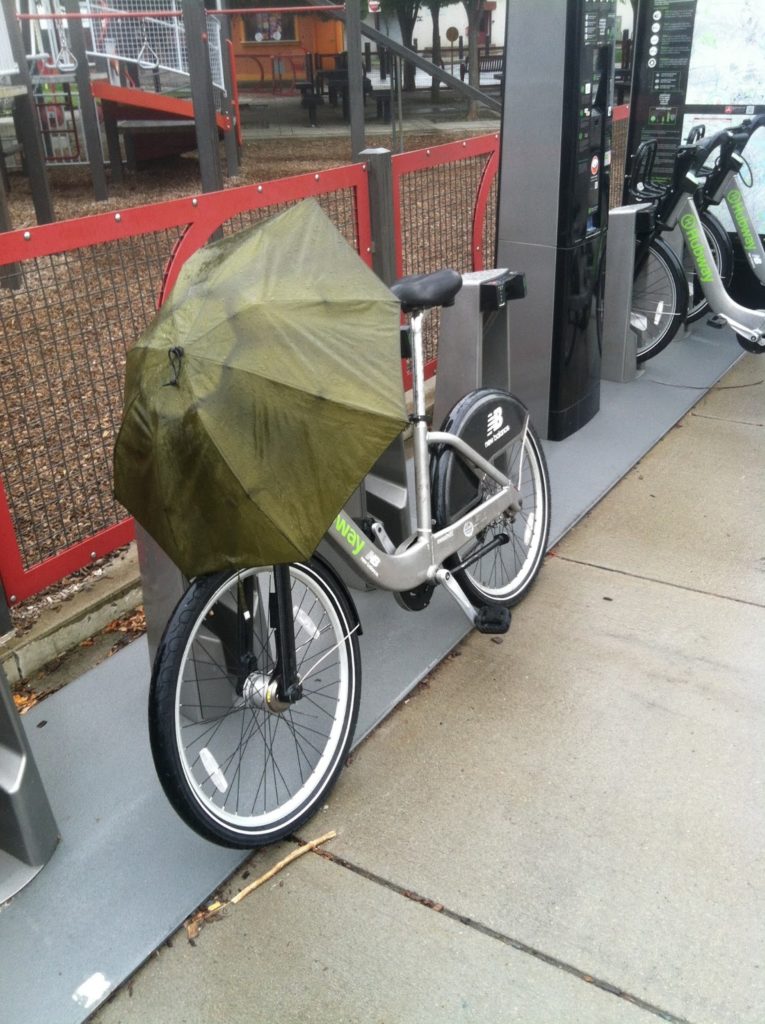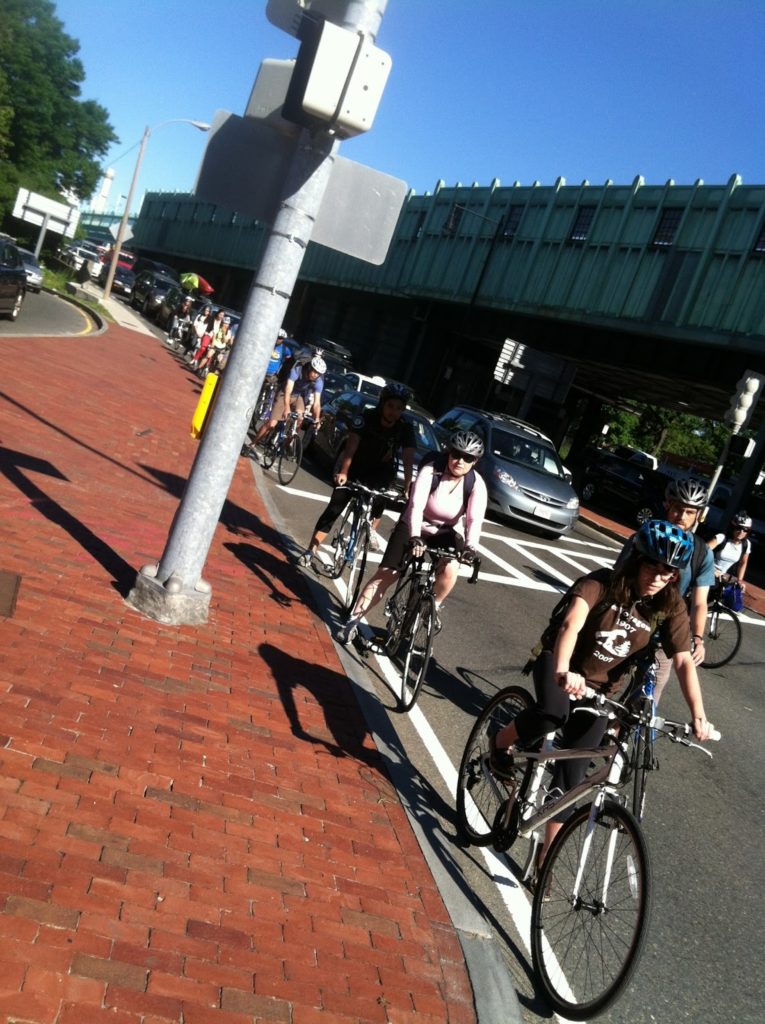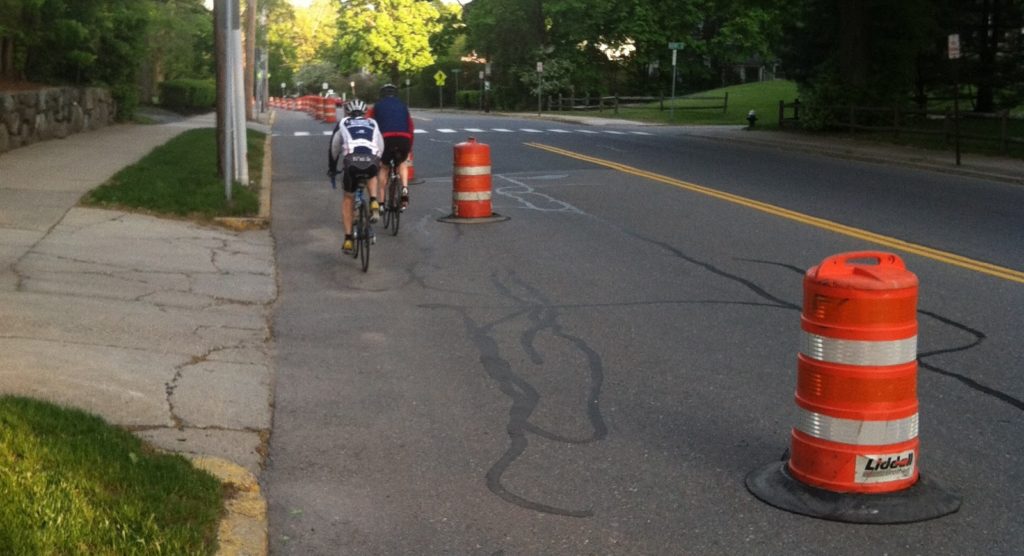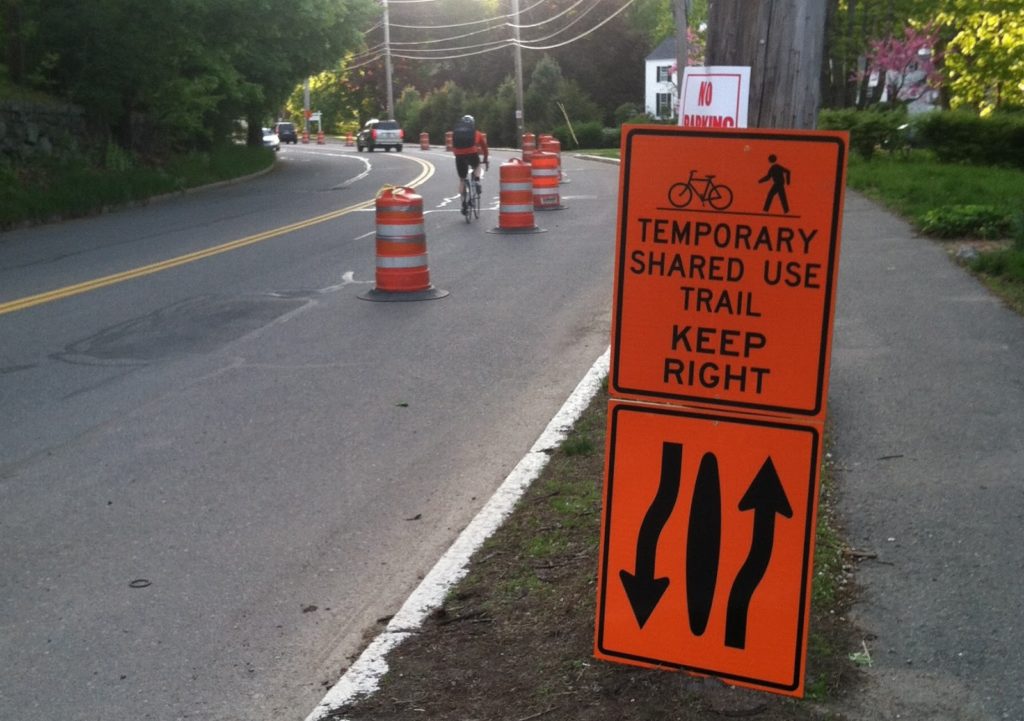It’s big bike time, with Bike Days/Weeks/Months sprouting up across the land (some are in June; Minnesota moved theirs after we all froze our behinds off in 2009). And it’s time for bellyaching about bike sharing in New York, apparently. Oh, and for arguing about whether or not cyclists should have traffic laws enforced to the same degree as motorists.
I fall in to the “not” camp, with several exceptions. This is mainly because bicyclists and motorists are orders of magnitude apart in terms of kinetic energy, and thereby damage. Consider:
Bicycle:
Average weight (rider, bicycle, accessories): 180 pounds
Average speed (in city riding): 12 mph
Top speed (in city riding): 25 mph
Average potential energy: 1175 joules
Top potential energy: 5099 joules
Automobile:
Average weight: 4000 pounds
Average speed (in city traffic): 25 mph
Top speed (in city driving): 45 mph
Average potential energy: 113310 joules
Top potential energy: 367120 joules
In other words, the average vehicle has—give or take—100 times more kinetic energy than the average bicycle. I think we’d all agree that if the fines fit the potential kinetic energy (they’d be akin to jaywalking fines, which are $1 in Boston and $2 in New York) they’d be tolerable, if laughable. (And this page is on the record as being opposed to the concept of jaywalking being illegal.) But increasingly, policies towards bikers are moving in to the “fine first, ask questions later” camp.
When it comes to red lights and stop signs, the only person a bicyclist is really endangering is him or herself. No one has ever heard about a bicyclist running in to a vehicle and injuring the occupants inside. If I go through a red light (I should say “when …”), you can be sure I’ve checked the intersection to assure that it is clear of all traffic. And much of the time in such situations I am going through so that I can get on to the next stretch of roadway ahead of—and visible to—traffic behind me.
But the one traffic rule I always do my best to follow? Yielding right-of-way to pedestrians. First, it sets a really good example. Drivers have a tough time being all high-and-mighty when they blow by a cyclist who’s stopped to yield to a pedestrian (especially when said cyclists then meets them at a red light and chastises them for their behavior, but I digress). But it’s also important because pedestrians are, in relation to cyclists, orders of magnitude less energetic. In the vulnerability hierarchy, they have much less ability to cause damage:
Pedestrian:
Average weight: 150 pounds
Average speed: 3 mph
Average potential energy: 61 joules
Here’s a simple Excel chart to illustrate (Except that the top blue bar should be about half-again as long, it broke Excel. Well not really, but it’s illustrative.):
It’s not the same differential: a bicyclists only have one order of magnitude more energy than a pedestrian; vehicles have two more than bicycles (and three more—more than 1000 times more—energy than a walker). And while it’s rare, bicyclists have killed pedestrians. (To be fair, the cyclists are generally injured in such accidents, which rarely happens when a car does something like plowing through people on to a crowded sidewalk.) But when I’m cycling, I always try to stop for pedestrians.
Am I successful? Most of the time. There are times when I’m paying too much attention to traffic and don’t see the pedestrian waiting to cross. There area few times—and I feel bad about this—when I’ve had a close call with a pedestrian walking through stopped traffic as I passed on a shoulder or a bike lane (I usually try to apologize, something difficult to do from a vehicle). But much more often, I slow down, and wave a pedestrian across. Quite often, they are surprised at the courtesy, even though they have full right of way. I often extend my arm out to warn passing cars to slow down, and have more than once weaved in front of a car to get them to slow down.
From a practical standpoint, I can usually keep enough momentum that I don’t come to dead stop, since once the pedestrian clears my bike I can start moving again (and since I can bob and weave around the pedestrian with more ease than, say, a six-foot-wide car). From a bike advocacy standpoint, it shows courtesy amongst bicyclists to more vulnerable users. (When I see a guy in a full kit on a $4000 carbon frame whipping by pedestrians in Cambridge, I get upset; I’ll defer to the inimitable Colin on this.) And from a safety standpoint, it is safer for cyclists and much safer for pedestrians.
So for red lights for me? Stopping is optional. But crosswalks? It’s mandatory.








